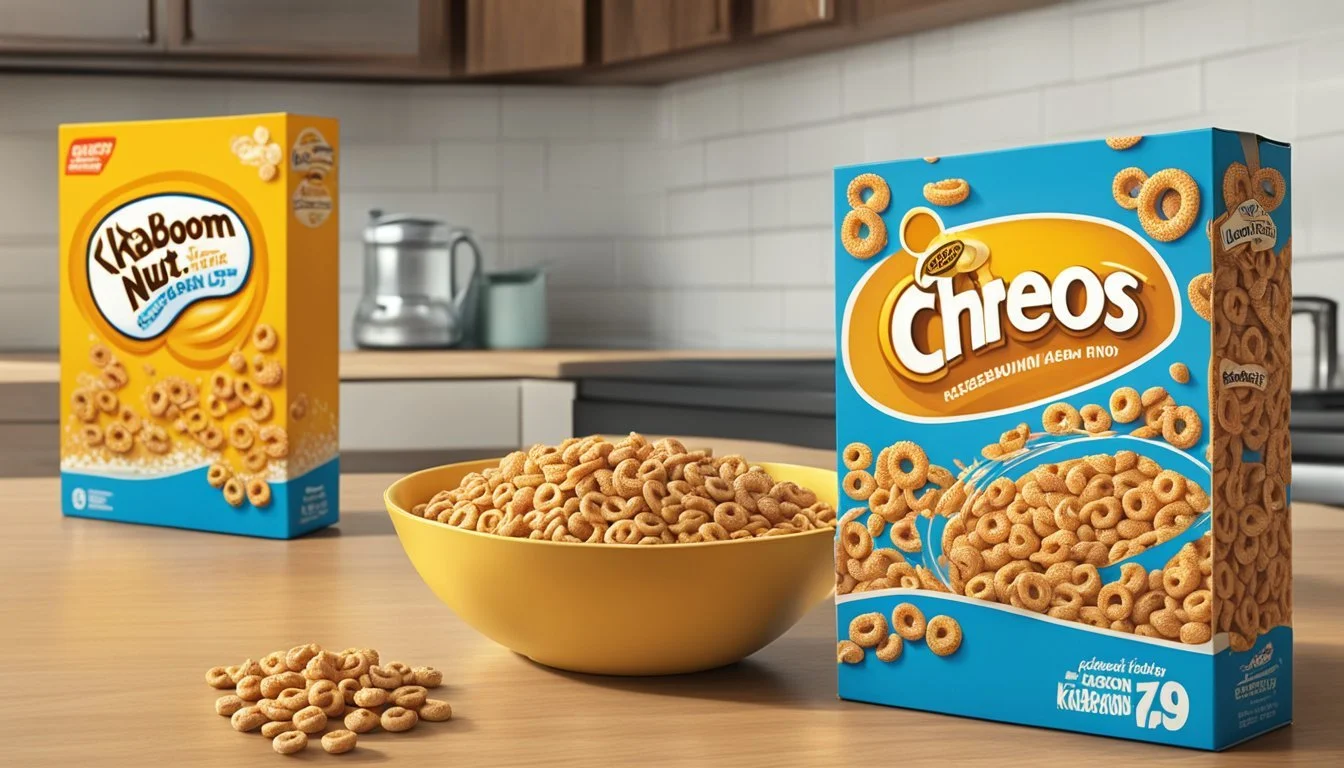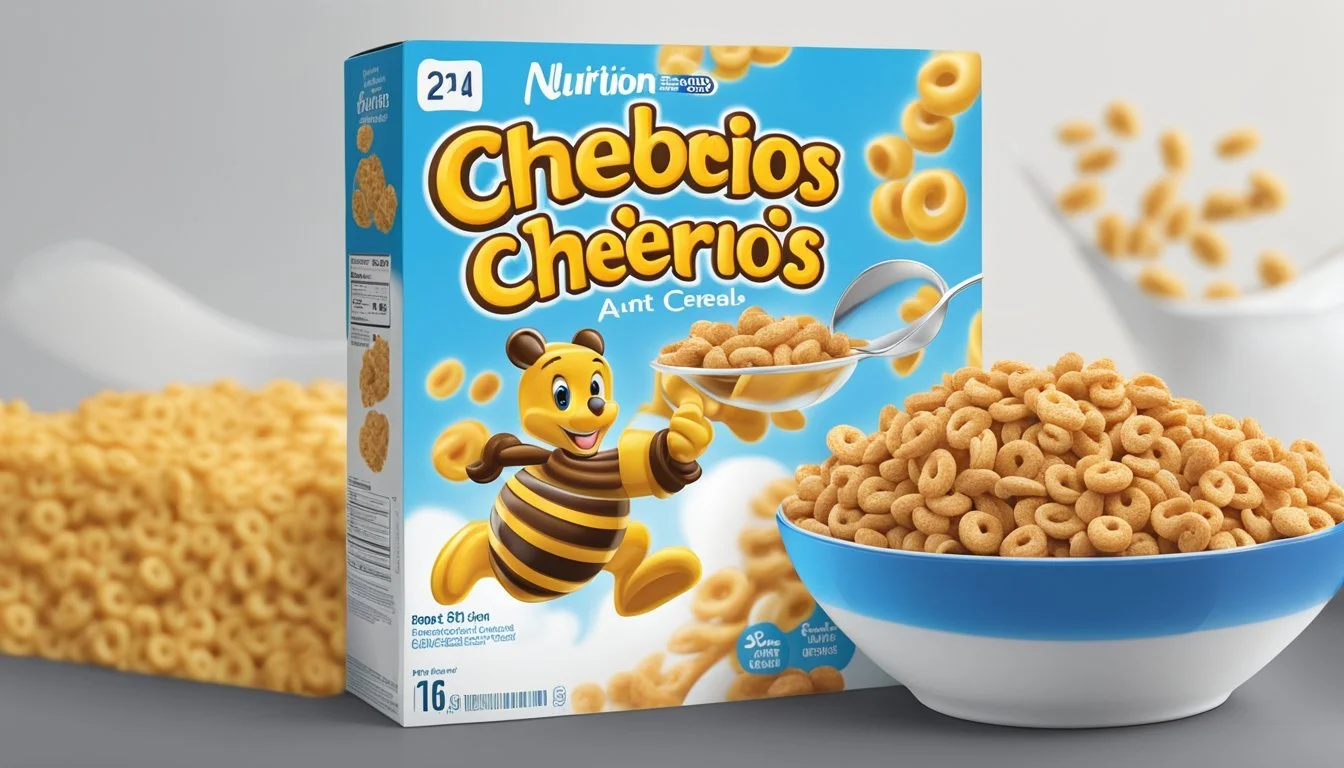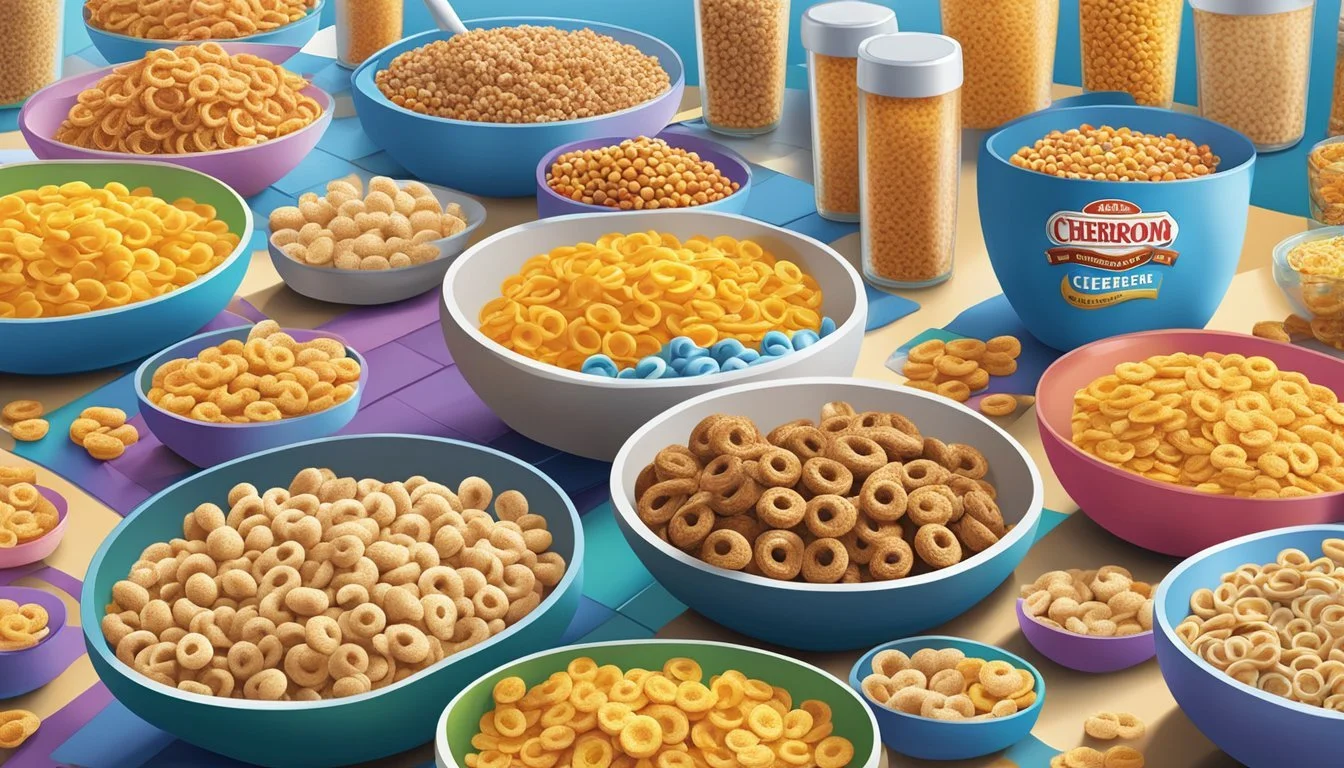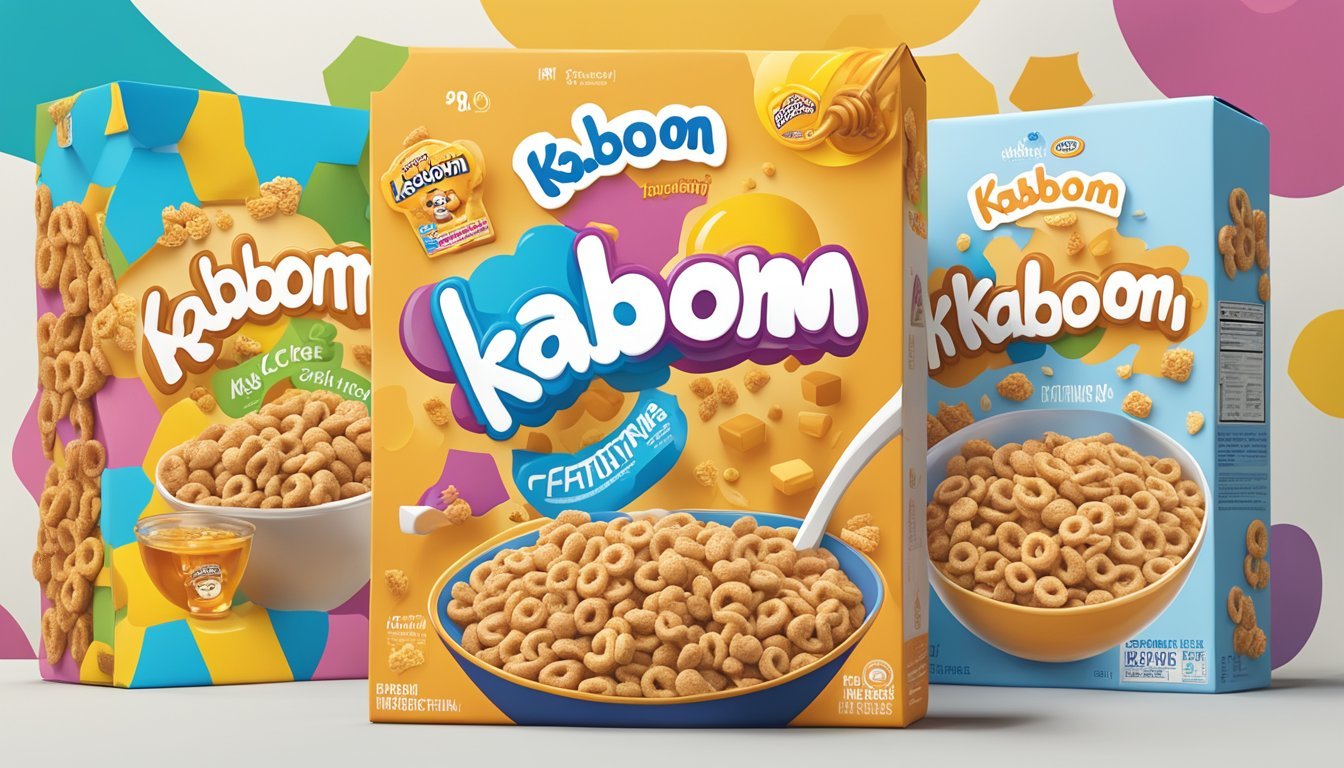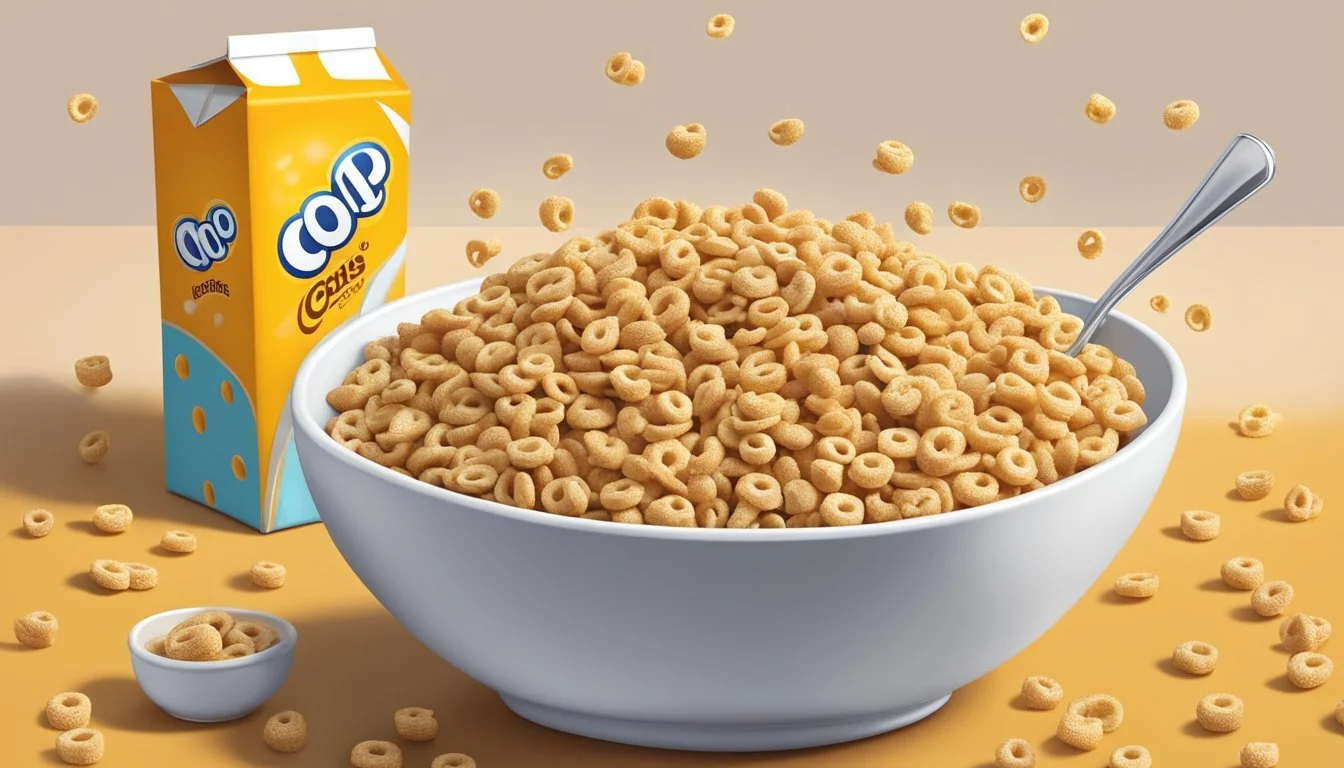Honey Nut Cheerios vs Kaboom
A Nutritional and Taste Comparison
This Article is Part of Our Breakfast Cereal Guide with Details on Honey Nut Cheerios Nutrition and Kaboom Nutrition
When it comes to breakfast cereals, few battles are as interesting as Honey Nut Cheerios vs Kaboom. Both cereals bring unique flavors and nutritional profiles to the table, making them favorites for different reasons. Honey Nut Cheerios, known for their sweet honey and nutty flavor, appeal to both children and adults alike. On the other hand, Kaboom, with its colorful and fun shapes, particularly attracts younger audiences looking for a vibrant start to their day.
Honey Nut Cheerios are made by General Mills and offer a blend of whole grain oats and real honey. This combination not only provides a sweet taste but also comes with the benefits of whole grains, making it a relatively healthy choice. Kaboom, produced by Quaker Oats, is notable for its colorful star and marshmallow shapes. Although not as commonly available as Honey Nut Cheerios, Kaboom still holds a nostalgic place in the hearts of many who grew up eating it.
When deciding between Honey Nut Cheerios and Kaboom, the choice often boils down to nutritional content vs. nostalgic appeal. Honey Nut Cheerios offer a healthier option with lower sugar content and higher nutritional value, making them a better choice for those conscious of their diet. Kaboom, while fun and engaging, tends to have higher sugar content, which might not be ideal for a health-focused breakfast.
Historical Background
Honey Nut Cheerios and Kaboom have interesting histories tied to major breakfast cereal brands. Their developments highlight shifts in cereal product offerings and marketing strategies over the decades.
Development of Honey Nut Cheerios
Honey Nut Cheerios was introduced by General Mills in 1979. It was created by Yandel Gonzalez, aiming to expand the Cheerios line with new flavors appealing to a wider audience.
Originally, Honey Nut Cheerios included real nuts, but this changed in 2006 when nuts were removed due to allergen concerns and manufacturing adjustments. The cereal is characterized by its honey and almond flavors, which contributed to its popularity.
BuzzBee, the mascot for Honey Nut Cheerios, was introduced in 1979 and named through a children's contest in 2000. Honey Nut Cheerios has been a commercial success and became the best-selling cereal in 2011.
Introduction of Kaboom
Kaboom was a colorful, clown-themed cereal launched by General Mills in the late 1960s. It was designed to appeal to children with bright, multi-colored pieces and a sweet taste.
The cereal was initially popular due to its playful aesthetic and vitamin-fortified content, which parents found appealing. Despite its early success, Kaboom saw a decline in popularity over the years.
Eventually, General Mills discontinued Kaboom, although it remains a nostalgic product for many who enjoyed it during its peak. Kaboom's market presence and influence on cereal marketing strategies are remembered fondly by those who grew up with it.
Nutritional Comparison
Comparing Honey Nut Cheerios with Kaboom cereal reveals significant differences in calories, sugar, fat, vitamins, minerals, fiber, and protein content. These differences can influence which cereal might be the healthier option based on dietary needs and preferences.
Caloric Content
Honey Nut Cheerios have approximately 110 calories per serving. In contrast, Kaboom comes in higher at around 120 calories per serving.
Though both cereals are relatively low in calories, the difference may be important for those strictly monitoring their caloric intake.
Table: Caloric Content
Cereal Calories per Serving Honey Nut Cheerios 110 Kaboom 120
Sugar and Fat
Honey Nut Cheerios contain 9 grams of sugar per serving, which is significantly higher than Kaboom's 6 grams. This makes Honey Nut Cheerios less favorable for those trying to reduce sugar intake.
On the fat front, Honey Nut Cheerios are low in fat with negligible saturated fat. Kaboom has similar fat content, ensuring both options are suitable for low-fat diets.
Sugar and fat levels can be crucial in managing conditions like heart disease and diabetes.
Vitamins and Minerals
Kaboom is fortified with a variety of vitamins and minerals, including iron, calcium, and zinc. Its levels of these nutrients generally surpass those in Honey Nut Cheerios.
For instance, Kaboom provides 25% of the recommended daily value of iron, while Honey Nut Cheerios offer around 10%. Vitamins A and B are also more abundant in Kaboom, making it a powerful option for meeting daily nutrient requirements.
Fiber and Protein
Fiber content can impact digestive health significantly. Honey Nut Cheerios have 2 grams of fiber per serving, whereas Kaboom offers about 4 grams.
Protein content is also a key metric. Honey Nut Cheerios come with 2 grams of protein per serving, while Kaboom includes 3 grams.
Higher fiber and protein values assist in maintaining a healthy digestive system and keeping you fuller longer.
Table: Fiber and Protein Content
Cereal Fiber per Serving Protein per Serving Honey Nut Cheerios 2g 2g Kaboom 4g 3g
Evaluating these nutritional aspects can help individuals make more informed dietary choices.
Taste and Texture Profile
Honey Nut Cheerios and Kaboom offer distinct experiences in terms of taste and texture. They cater to different palate preferences, whether you're seeking a classic honey flavor or a fruity burst.
Flavor Variety
Honey Nut Cheerios are known for their signature honey flavor with a hint of almond. This flavor profile is subtle yet satisfying, making it a popular choice for breakfast. Other varieties like Pumpkin Spice Cheerios, Very Berry Cheerios, and Chocolate Peanut Butter Cheerios provide additional options.
Kaboom, on the other hand, brings a fruity mix to the table, appealing to those who enjoy cereals with vibrant flavors. The multicolored pieces offer varying fruit tastes, creating a more dynamic eating experience than the singular honey note of Honey Nut Cheerios.
Mouthfeel and Crunchiness
Honey Nut Cheerios deliver a consistent crunch with each bite. The O-shaped pieces retain their firmness when combined with milk, providing a pleasant mouthfeel. This cereal's texture is designed to stay crunchy, avoiding sogginess for a more enjoyable eating experience.
Kaboom features a harder crunch initially, but the textured pieces tend to soften more quickly in milk. This rapid change in texture can be appealing for those who prefer a softer bite after a brief soak. The firmness levels in Kaboom vary, adding an extra layer of interest to each spoonful.
Health Considerations
When comparing Honey Nut Cheerios and Kaboom, important factors to consider include their impact on chronic conditions and how they fit into specific dietary needs.
Impact on Chronic Conditions
Honey Nut Cheerios contain whole-grain oats, which are linked to heart health. Oats are a source of dietary fiber known to aid in lowering cholesterol levels. These cereals also have essential B vitamins, iron, and folate.
Kaboom, aimed at children, also has whole grains but significantly less fiber than Honey Nut Cheerios. It contains multiple vitamins and minerals but has a higher sugar content, which can affect blood sugar levels and is a concern for diabetes management.
Regular consumption of high-sugar cereals like Kaboom can contribute to chronic conditions such as obesity and diabetes. On the other hand, the moderate sugar content and higher fiber levels in Honey Nut Cheerios make them a slightly better option for managing cholesterol and potentially reducing the risk of heart disease.
Dietary Considerations
Honey Nut Cheerios are generally marketed as heart-healthy due to their fiber content from whole grains. Each serving has 2 grams of protein and 110 calories, making it a reasonable choice for calorie-conscious individuals. However, it should be noted that they contain 9 grams of sugar per serving, which could be a concern for those monitoring their sugar intake.
Kaboom is gluten-free, making it suitable for individuals with celiac disease or gluten intolerance. It's more sugar-laden, which may appeal to children's tastes but is less ideal for maintaining a balanced diet. This high sugar content conflicts with recommendations to limit added sugars, especially for children.
Both cereals provide essential vitamins and minerals, yet, their suitability may vary based on individual dietary goals and health conditions. Therefore, Kaboom’s higher sugar levels make it less favorable for regular consumption, while Honey Nut Cheerios strike a better balance between essential nutrients and relatively lower sugar content.
Market Presence
Honey Nut Cheerios and Kaboom have distinct market presences influenced by their sales, popularity, and availability across various retail channels.
Sales and Popularity
Honey Nut Cheerios is among the top-selling cereals in the United States. According to Zippia, it ranks as the third best-selling cereal, with substantial annual sales. Its popularity stems from its sweet flavor and recognizable brand. Honey Nut Cheerios has maintained a consistent consumer base across different generations, contributing to its strong market position.
Kaboom, though once popular, doesn't enjoy the same level of current market success. It has a niche following. While it retains nostalgic value for some consumers, its overall market penetration is limited compared to mainstream cereals like Honey Nut Cheerios. Kaboom's sales are modest and mostly driven by selective, nostalgic consumers rather than widespread popularity.
Availability and Accessibility
Honey Nut Cheerios is widely available in various retail outlets, including major supermarkets, grocery stores, and chains like Walmart. It can be found in almost any location that sells cereal, highlighting its accessibility. This ubiquity ensures that consumers can easily purchase it, contributing to its enduring market presence.
Kaboom, on the other hand, is less readily available. It is not commonly found on the shelves of major supermarkets or chains. Those interested in purchasing Kaboom often have to seek it out online or in specialty stores. This limited availability impacts its market presence and accessibility, making it less of a staple in the average household's pantry.
Consumer Experience
When comparing Honey Nut Cheerios and Kaboom in terms of consumer experience, considerations such as packaging, branding, and price affordability are essential. These elements influence personal preference and perceived value, impacting purchasing decisions.
Packaging and Branding
Honey Nut Cheerios feature a distinctive yellow box with the iconic bee mascot. The branding highlights simplicity and health benefits, appealing to a broad audience, especially families.
Kaboom cereal is known for its colorful box and whimsical characters. This playful approach caters to children and creates a sense of fun, differentiating it from the more subdued Honey Nut Cheerios.
While Honey Nut Cheerios emphasize a balanced lifestyle, Kaboom leans into excitement and joy, making it a personal preference between health-conscious simplicity and vibrant enjoyment.
Price Affordability
Price can be a decisive factor for many consumers. Honey Nut Cheerios, being a popular brand, might have a higher price point but often justifies it through perceived health benefits and brand trust.
Kaboom typically offers a more budget-friendly option, making it accessible for families looking to save without compromising on the fun aspect of breakfast.
Evaluating price and value, individuals must weigh the health benefits of Honey Nut Cheerios against the affordability and joyful branding of Kaboom.
Variety and Options
Honey Nut Cheerios and Kaboom offer a range of choices appealing to different preferences and needs. Both cereals come in various flavors and serve sizes, catering to a wide audience.
Special Editions
Honey Nut Cheerios expands its range with special editions that include flavored variants like Frosted Cheerios, Apple Cinnamon Cheerios, and Cheerios Oat Crunch. Each flavor offers a unique taste experience, with options like Oats 'N Honey and Cinnamon Cheerios providing additional variety. These special editions allow consumers to explore diverse tastes while still enjoying the base benefits of whole grain oats and real honey.
Kaboom, although not as extensive in flavor options as Cheerios, has its unique appeal with its colorful, kid-friendly design. Kaboom primarily sticks to its original flavor but is known for its vibrant marshmallow pieces that attract children. The cereal's fun design and distinct taste ensure it stands out, even without a broad range of flavors.
Serving Size Flexibility
Honey Nut Cheerios offers various serving sizes to fit different needs. Family packs are ideal for large households, while single servings cater to individuals or those who prefer portion control. The flexibility in serving sizes ensures that everyone from large families to single users can enjoy their cereal without waste.
Kaboom, while not as versatile in packaging options, generally offers standard large boxes. This choice is more suited to families or those who consume cereal regularly. However, the availability of serving sizes is more limited compared to Honey Nut Cheerios.
Environmental and Social Responsibility
When comparing Honey Nut Cheerios to Kaboom, a significant aspect is their commitment to environmental and social responsibility.
General Mills, the manufacturer of Honey Nut Cheerios, has launched a "Save the Bees" campaign to raise awareness about bee populations. They have encouraged consumers to plant bee-friendly wildflowers, addressing the decline in global bee populations which play a critical role in pollinating crops.
In terms of sustainability, General Mills has committed to sustainably sourcing their 10 main ingredients by 2020, achieving 76% of this goal. This effort showcases the company’s ongoing drive towards more sustainable production practices, with a specific focus on reducing the environmental impact of their supply chain.
Honey Nut Cheerios is also being proactive in minimizing the environmental footprint of their agricultural practices. General Mills promotes the use of cover crops like oats, which are beneficial for soil health and biodiversity.
Kaboom, while not as prominent in environmental initiatives, is known for its fun and colorful branding. There is limited publicly available information about Kaboom's specific environmental and social responsibility initiatives, suggesting that their focus might be more on the consumer experience rather than sustainability practices.
To summarize the available commitments:
Honey Nut Cheerios (General Mills)
Save the Bees Campaign
Bee-friendly wildflower planting
Sustainable sourcing goals
Promotion of cover crops
Kaboom
Limited known environmental or social initiatives
By integrating these practices, Honey Nut Cheerios demonstrates a clear commitment to environmental sustainability and social responsibility, setting a benchmark in the cereal industry.
Final Thoughts
When deciding between Honey Nut Cheerios and Kaboom, consumers have distinct factors to consider.
Honey Nut Cheerios offers a consistent honey-flavored taste with a slight nutty undertone. This cereal is widely appreciated for its appeal to both adults and children. Its nutritional profile is relatively straightforward, often noted for being a low-sugar option compared to many sweetened cereals.
Kaboom, on the other hand, brings a burst of color and fun shapes to the breakfast table, making it particularly appealing to children. Though it's higher in sugar compared to Honey Nut Cheerios, its playful appearance may make breakfast more enjoyable for younger consumers.
A comparison:
Criteria Honey Nut Cheerios Kaboom Flavor Honey with nutty notes Sweet and fruity Nutrition Lower sugar, oat-based Higher sugar, multi-grain Appearance Simple rings Colorful, playful shapes Target Audience Broad, family-friendly Primarily children
While both cereals cater to different preferences and nutritional needs, the choice often boils down to personal taste and dietary goals.
Some may prioritize the nutritional benefits of Honey Nut Cheerios. Others might favor the vibrant and fun aspect of Kaboom, especially for young children. Each offers unique advantages, making the decision a matter of individual preference.
More on Honey Nut Cheerios
Cinnamon Toast Crunch vs Honey Nut Cheerios: Which is better?
Honey Nut Cheerios vs Kellogg's Apple Jacks: Which is better?
Honey Nut Cheerios vs Kellogg's Froot Loops: Which is better?
Honey Nut Cheerios vs Post GrapevsNut Flakes: Which is better?
Honey Nut Cheerios vs Post Raisin Bran Cereal: Which is better?


